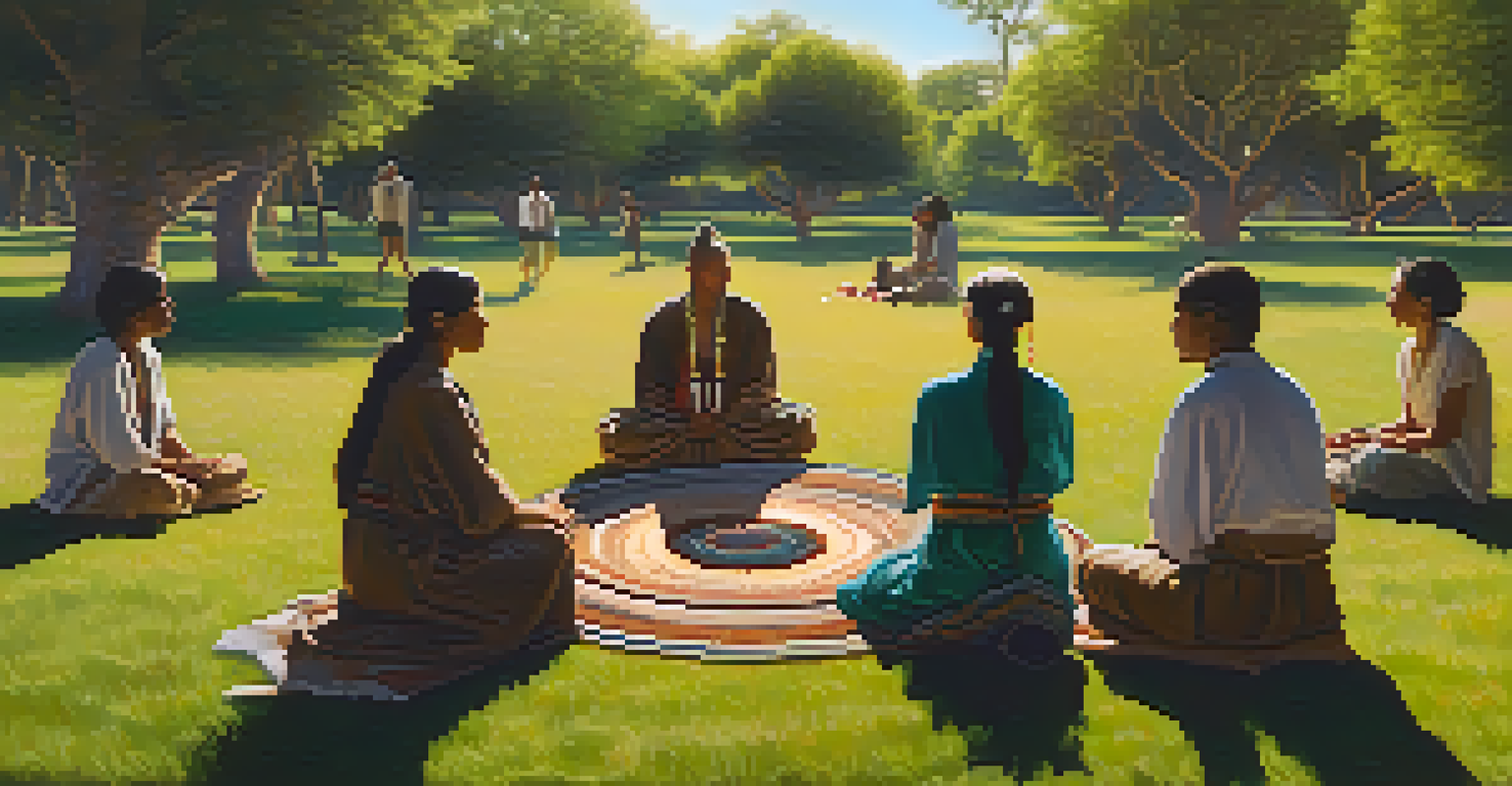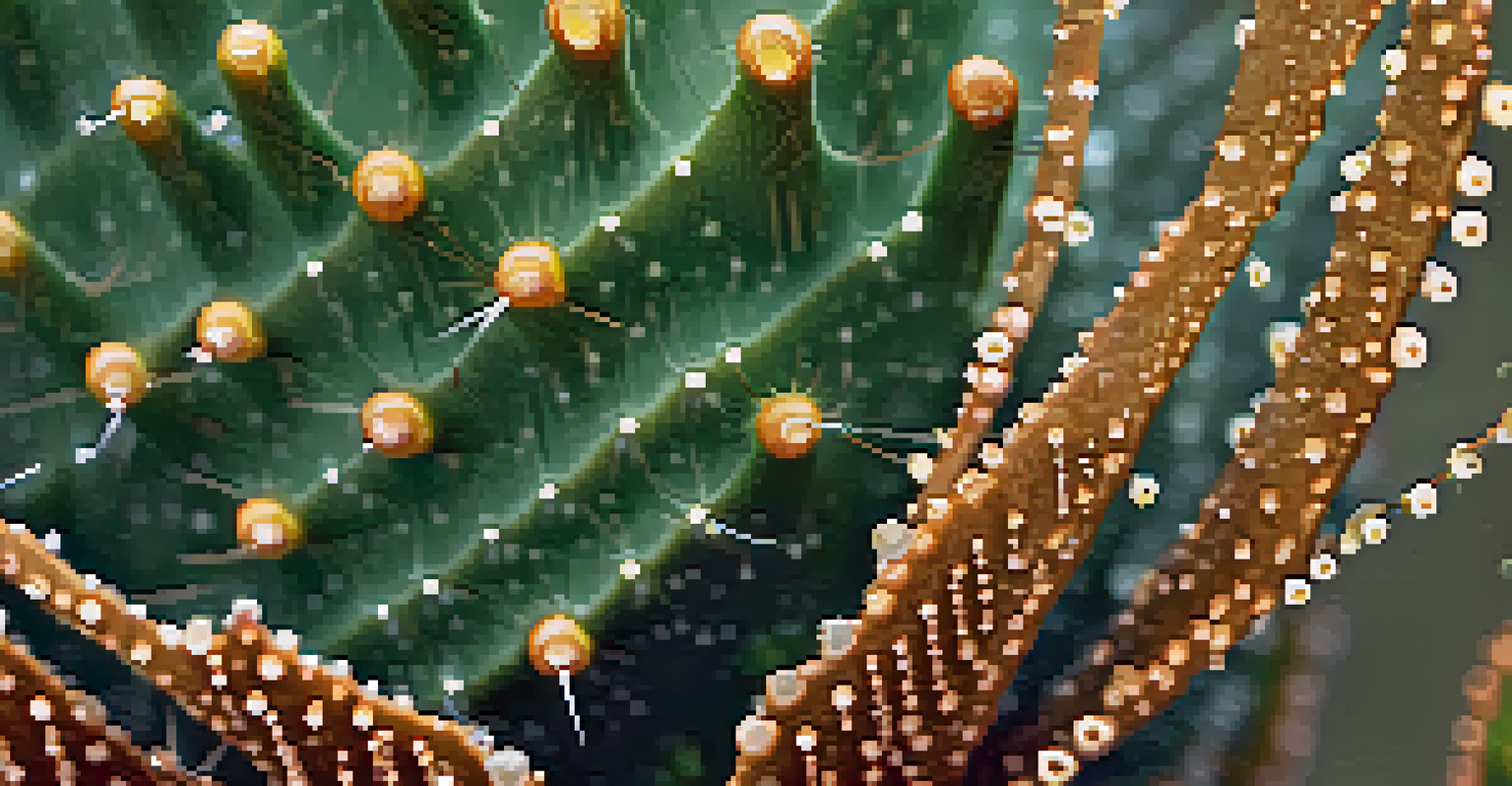Psychedelic Journeys: Peyote and Personal Insight

Understanding Peyote and Its Cultural Significance
Peyote, a small cactus native to Mexico and the southwestern United States, has been used for centuries in religious and spiritual ceremonies by indigenous peoples. Its psychoactive compound, mescaline, induces profound alterations in perception, emotion, and consciousness. This cultural context is essential for understanding how peyote serves as more than just a psychedelic; it's a tool for spiritual growth and personal insight.
The experience of peyote is not just about the psychedelic effects; it is about connecting with the spirit of the land and our own inner selves.
The rituals surrounding peyote use often involve guided experiences that promote introspection and connection with nature. Indigenous tribes, such as the Huichol and the Native American Church, regard peyote as a sacred medicine that facilitates healing and self-discovery. By respecting this cultural heritage, we can appreciate the depth of the peyote experience beyond recreational use.
As interest in psychedelics grows, understanding peyote’s cultural roots becomes increasingly important. Engaging with these traditions can enhance our own journeys, inviting a deeper connection to the land, its history, and the shared human experience.
The Science Behind Peyote and Mescaline
Mescaline, the primary active ingredient in peyote, interacts with serotonin receptors in the brain, influencing mood, perception, and cognition. This interaction can lead to vivid visual hallucinations, time distortion, and enhanced sensory experiences. Understanding this science provides insight into why peyote can facilitate profound personal revelations.

Research has shown that psychedelics like mescaline can promote neuroplasticity, allowing the brain to forge new connections and break free from entrenched thought patterns. This effect can lead to breakthroughs in emotional processing and self-awareness, making peyote a powerful ally in personal growth journeys. As we dive deeper into the science, we see the potential for healing hidden within these experiences.
Peyote's Cultural Significance
Peyote is revered by indigenous peoples as a sacred medicine that facilitates healing, self-discovery, and a deep connection to nature.
However, it's crucial to approach peyote with intention and respect. A guided experience, often in a ceremonial setting, can maximize the therapeutic benefits while minimizing risks. Knowledge of the science behind mescaline helps users prepare for the journey ahead.
Preparing for a Peyote Journey: Mindset Matters
Preparation is key when embarking on a peyote journey. Setting a clear intention can guide the experience and help participants focus on personal insights they wish to uncover. Whether seeking clarity on a specific life challenge or a deeper understanding of oneself, intentions act as a compass during the journey.
Psychedelics can help us break down our barriers and see the world in a new light, leading to personal growth and deeper understanding.
Creating a safe and comfortable environment is equally important. This includes choosing the right setting, whether it’s surrounded by nature or in a private space, where distractions are minimized. Surrounding oneself with supportive individuals can enhance the experience, ensuring that participants feel safe to explore their inner landscapes.
Additionally, incorporating practices like meditation or journaling prior to the journey can help cultivate a receptive mindset. These practices can ground participants and enhance their ability to integrate the insights gained during the experience, ensuring that the journey doesn’t end when the effects fade.
What to Expect During a Peyote Experience
A peyote experience can vary significantly from person to person, often encompassing a wide range of feelings and sensations. Users may encounter visual and auditory hallucinations, deep emotional releases, or profound insights about their lives. Understanding this variability can help manage expectations and embrace the unknown.
Typically, the onset of effects can begin within 30 to 90 minutes after consumption, lasting for several hours. During this time, users may experience a sense of interconnectedness with nature or a feeling of unity with the universe. These moments can be awe-inspiring, offering profound insights that resonate long after the experience ends.
Science of Mescaline Effects
Mescaline, the active compound in peyote, alters perception and mood by interacting with serotonin receptors, promoting emotional breakthroughs and neuroplasticity.
It's also important to acknowledge that some aspects of the experience may be challenging. Users might confront difficult emotions or memories, which can be uncomfortable but ultimately healing. Navigating these challenges with the right support can lead to significant personal growth and transformation.
Integration: Making Sense of Your Journey
Integration is the process of incorporating insights gained during a peyote journey into everyday life. This step is crucial, as it helps participants translate profound experiences into actionable understanding. Without integration, the insights may fade, leaving individuals feeling disconnected from their journey.
Journaling about the experience can be a powerful tool for integration. By putting thoughts and feelings into words, individuals can reflect on their insights and recognize patterns or lessons that emerge. Sharing experiences with supportive friends or a therapist can also provide new perspectives and foster a sense of community.
Engaging in practices such as meditation, art, or nature walks can further enhance the integration process. These activities can help ground the insights and allow individuals to explore their newfound understanding in a tangible way, promoting lasting personal growth.
Navigating Challenges: Safety and Support
While peyote can offer transformative experiences, it's essential to prioritize safety and well-being. Not everyone is suited for psychedelic experiences, and individuals with certain mental health conditions should approach with caution. Consulting with a qualified professional before embarking on a peyote journey can help assess personal readiness.
Having a trusted guide or experienced facilitator can also enhance safety. These individuals can provide support during the journey, helping to navigate any challenging emotions or experiences that arise. Their presence can create a sense of safety, allowing participants to delve deeper into their introspective journeys.
Importance of Integration
Integrating insights gained from a peyote journey into daily life is crucial for personal growth and understanding, often facilitated through practices like journaling and meditation.
It's also vital to consider the legal and ethical implications of peyote use. In some areas, its consumption is regulated, and respecting these laws is crucial. Engaging with peyote in a responsible manner ensures that individuals can enjoy its benefits while honoring its cultural significance.
The Future of Peyote and Personal Insights
As interest in psychedelics continues to grow, peyote is gaining recognition for its potential to facilitate personal insight and healing. Researchers and advocates are exploring its therapeutic applications, particularly for mental health conditions like PTSD and depression. This emerging field holds promise for integrating traditional practices with modern science.
However, the future of peyote is also tied to its sustainability and preservation. Overharvesting and habitat loss threaten the wild populations of this sacred cactus, raising concerns about its availability for future generations. Advocating for responsible sourcing and cultivation practices is essential to ensure that this powerful tool remains accessible.

Ultimately, the journey with peyote is not just about personal insight but also about fostering a deeper connection to our shared humanity. As we navigate this exploration, we must approach these experiences with respect, intention, and care, paving the way for a more insightful and connected future.